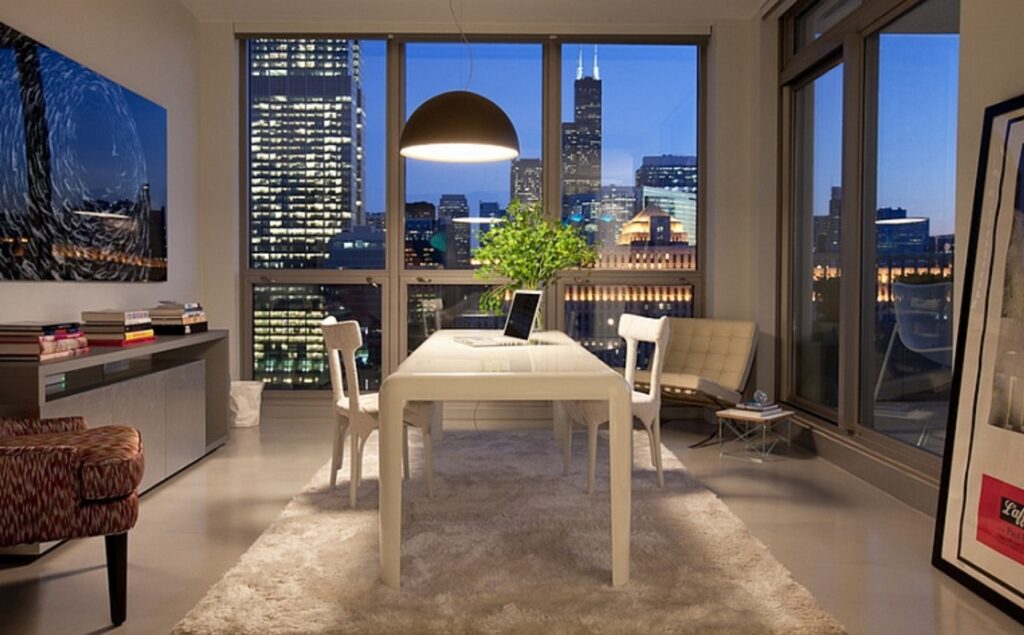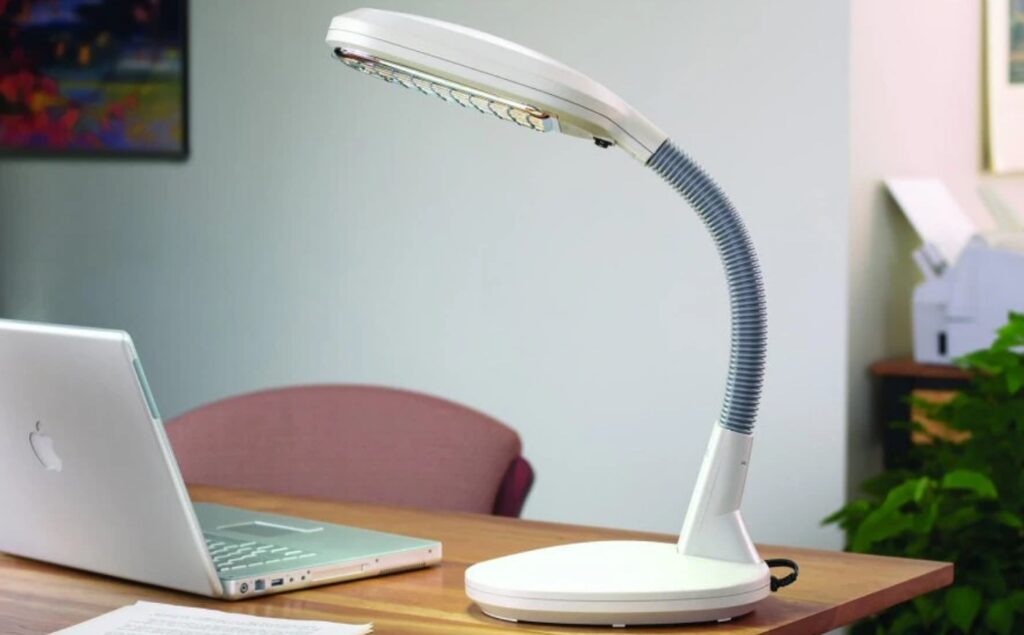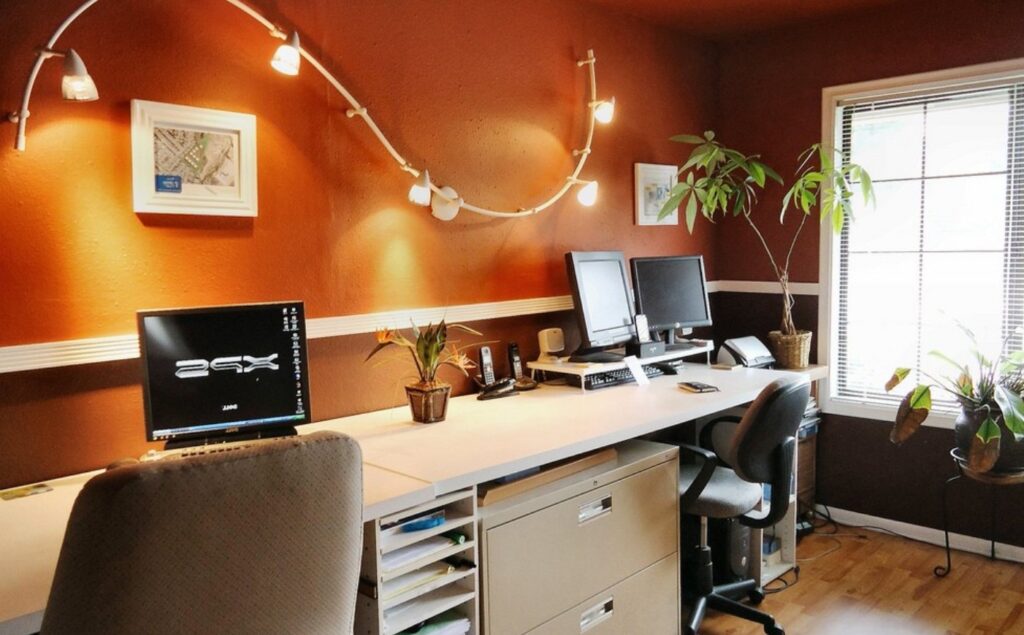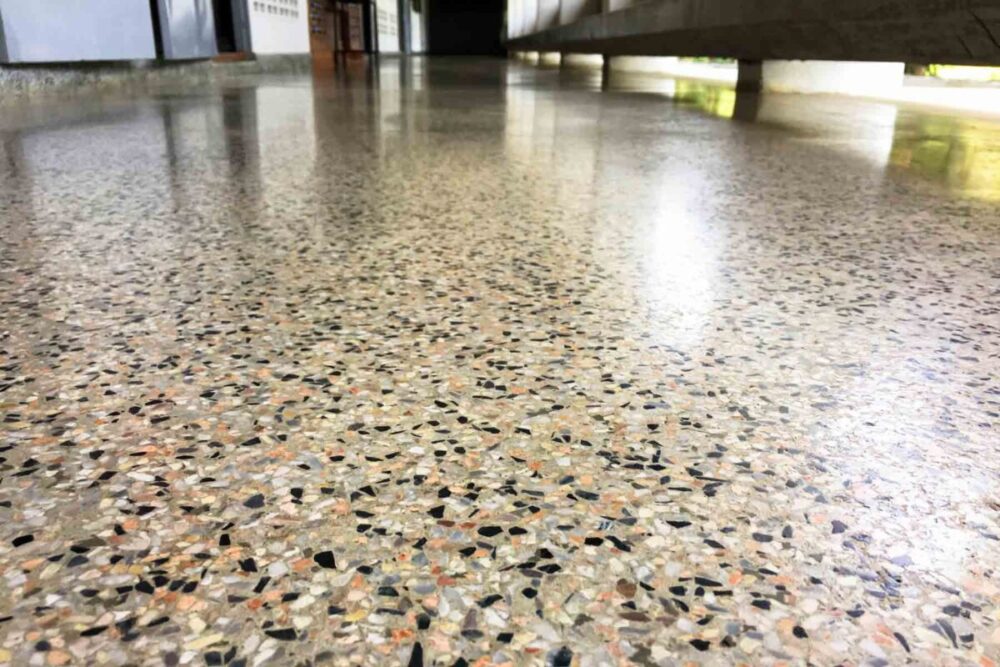With remote work on the rise during the Covid-19 outbreak, home work stations are becoming more conventional. However, not all home offices are made equal, and if this is your first time upgrading your home office, you might be struggling to get it right.
Office lighting is one vital consideration that has a great impact on your comfort and productivity. And contrary to what you might have heard, that’s a more nuanced subject than you think. While you want to create an atmosphere, you feel comfortable in that suits the flow of your home, lighting a home office should do more than just illuminate a space. If you think about it, one pair of sneakers doesn’t allow you to partake in all activities. The same goes with your home office, a variety of light sources should help you carry out different tasks.
We’ve gathered some tips to help you optimize your home office lighting.

1. Ambient Lighting
Ambient lighting, also known as general lighting, is the type of light we commonly use to enter a space and move around the house safely. Usually, ambient lighting is primarily provided by a wall fixture or ceiling. That’s the base layer you should start with, but most rooms have at least one or two fixtures incorporated for this task. But when it comes to a home office setup, you have to make sure the ambient lighting system you have is giving that even level of lamination you’re hoping for.
An efficient layer of evenly shared ambient lighting makes it easier to implement other kinds of lighting without creating problems that can lead to fatigue and eye strain or dramatic shadows.
A dimmer switch is the best possible option for ambient lights as it allows you to adjust them throughout the day and suit the light to your task at hand.

2. Add Task Lighting
In any spot where you will be working, writing, reading or performing computer work, you will need a high-quality task lamp. Task lighting is meant to ensure your work under the best lighting conditions.
Day-to-day assignments including reading, computer work and writing can be easily amplified through a quality desk light.
Regardless if that’s a lamp or a couple of strip lights, this light source should be focused on the task at hand, helping you concentrate on the finer details. According to ledlightexpert.com choosing an adjustable desk lamp, for instance, will allow you to adapt the angle of lighting effortlessly for working no matter the setup and scenario.
Additionally, placing a task light behind your computer screen will diffuse the light from the screen, reducing the severity of light reflected onto your eyes.

3. It’s All About Angles
Where and how you set your lighting system matter more than you’d think. Lighting is all about playing with angles, and a great part of how you use natural light depends on what purpose your home office serves. Suppose you’re a designer or an architect who works more on sheet and paper instead of tech gadgets, in that case, a flood of natural light is a welcome addition.
Here’s a hint: align your office in the south or north directions, so the natural light does not create a shadow during any time of the day.

4. Daylight Is the Best Light
One thing we often notice about some tech-addicts who are constantly plugged into their laptops, smartphones and iPads is the way they purposely avoid any hint of natural sunlight. But it makes some sense – if you didn’t know better, you too would be tempted to believe that these people are long-lost cousins of Dracula. However, natural light is not such a bad thing if you know how to use it in your own fashion. Having a bright and roomy workspace will encourage and motivate productivity while minimizing procrastination. Whenever possible, try to welcome a natural flow of daylight into your office room.
Sunlight has been shown to stimulate mood and promote a relaxed working environment. Not only that but the natural daylight will allow you to absorb a necessary intake of vitamin D, keeping your immune system healthy and your bones strong.
Moreover, regulating how the natural light enters into the room can be reached through the use of blinds, shutters and placing your workstation or office in the south or north direction to minimize glares and shadows from the sun.

5. Light Bulbs
When setting up a new lighting system into your home office, choosing the right light bulb is quite important. Having a proper projection of lighting is good for workspaces. In a home office, you will need to cool, bright lighting to maintain concentration and focus. For instance, if you’re regularly attending Zoom meetings, then you will want to use a bright light to look like a professional.
Wanting to choose warm to cool temperature bulbs with a dimmable option is ideal. With a dimmable light feature, you can adjust your lighting needs and strengths according to different phases of the day. At this point, a bulb that falls between 3000k and 5000k ranges should offer a quality amplification of light to your home office.

6. A Well-lit Workplace
Without professional advice, it can be challenging to figure out what lighting will go best for your home office setup, especially if this topic is new to you.
Since each person’s needs and preferences are different, what is right for someone else might not be the best lighting solution for you. If you’ve just moved in, it’s smart to rethink your lighting choices from the beginning, instead of using whatever has been left by the previous tenants. Lighting, especially in the working space, should be specific to your needs. The colour, type and brightness of your lights should be based on the layout of your room and what it will be used for.
If you don’t get the lighting you’ve planned at first, don’t be disappointed. You are not alone, and often it takes time before you figure out the specific problems of the space and come up with intelligent solutions.





